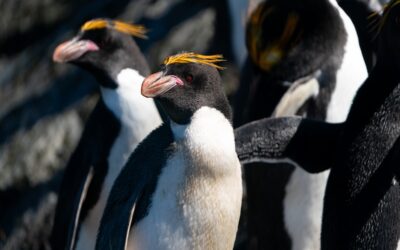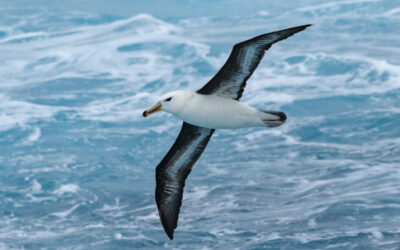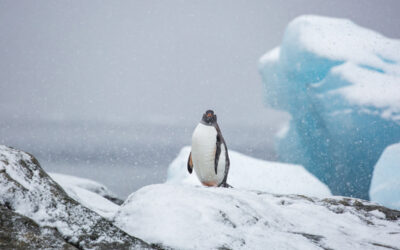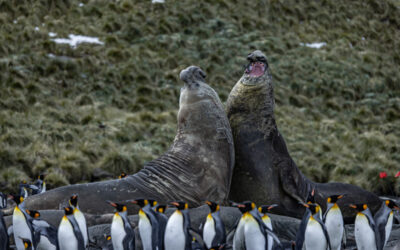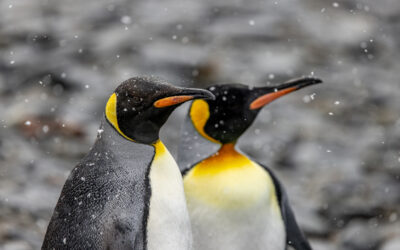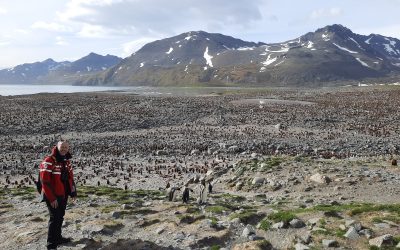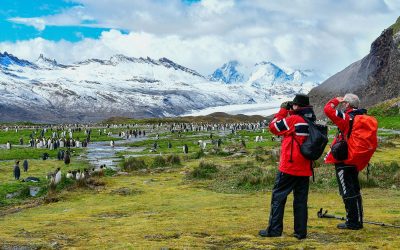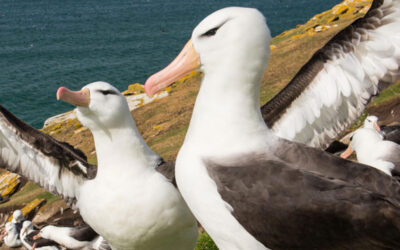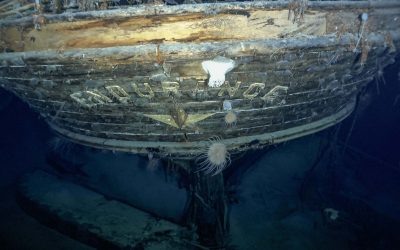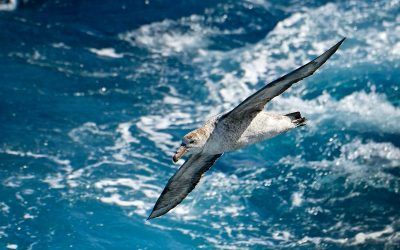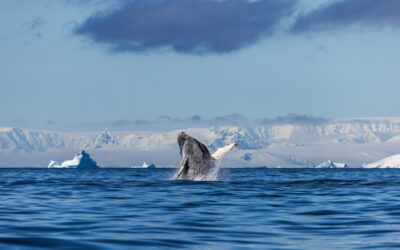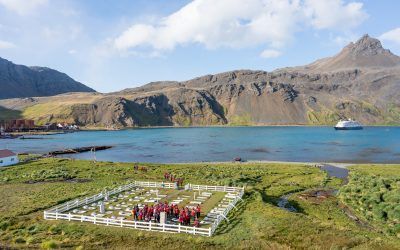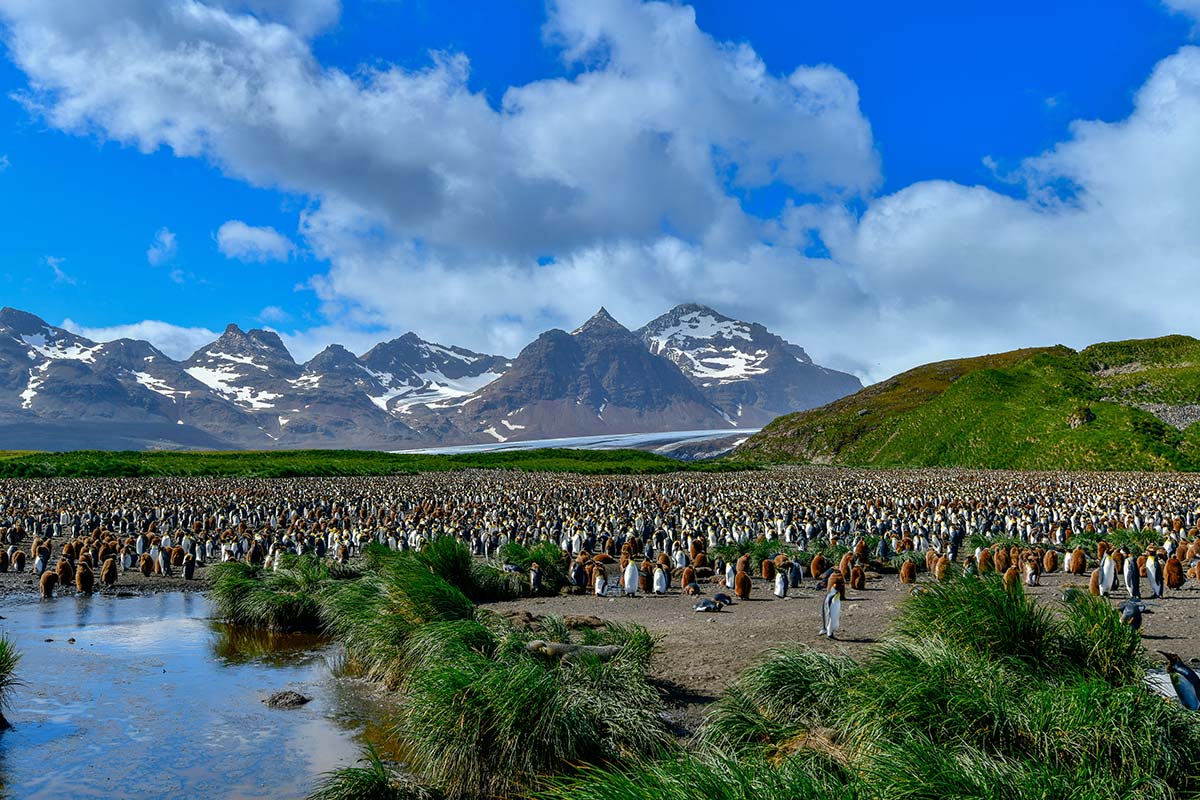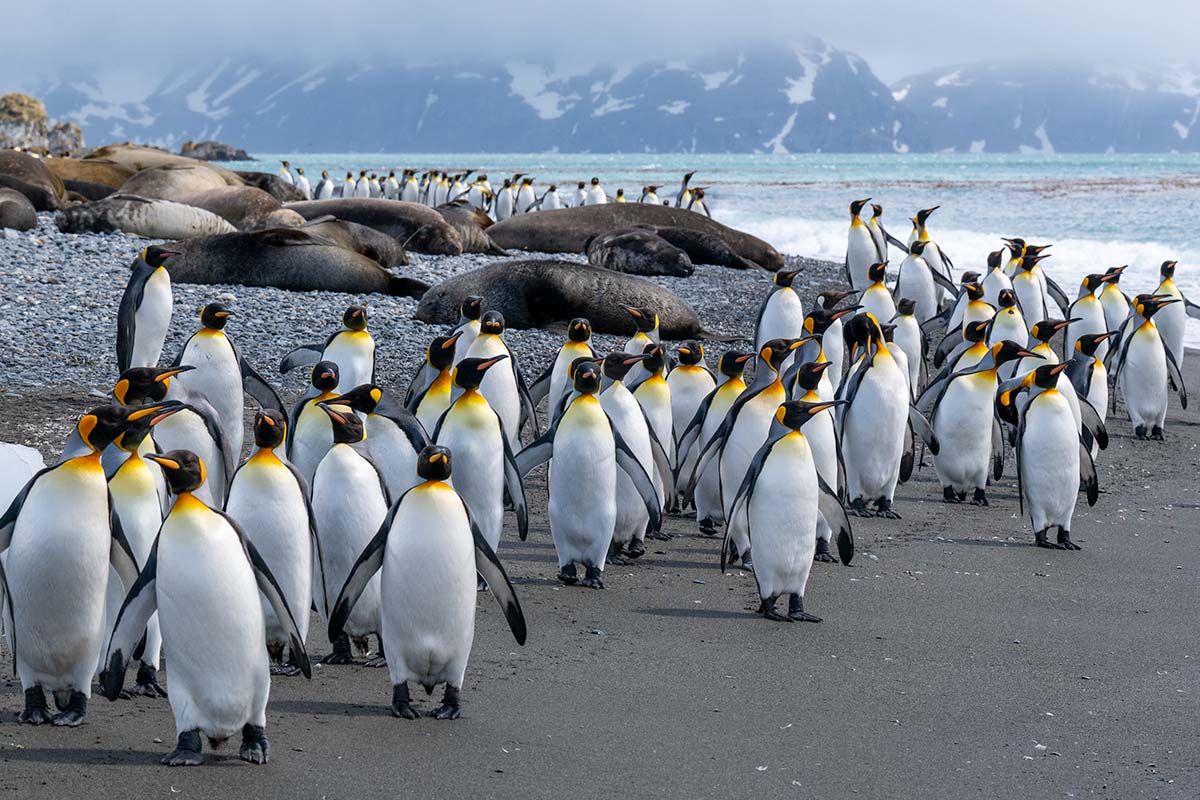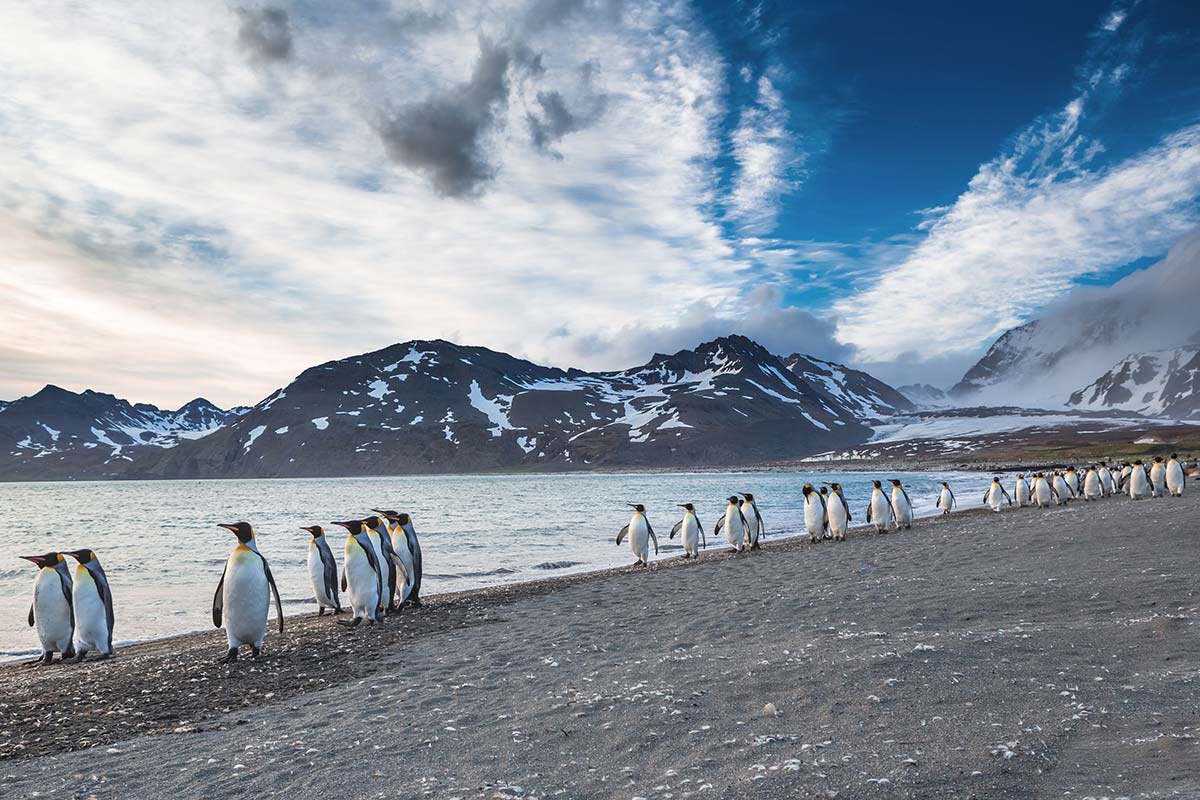South Georgia
Where Wildlife Rules, and Penguins Are King
Over a thousand miles from the South American mainland and a similar distance from Antarctica, the rugged peaks of South Georgia pierce the moody skies of the Southern Ocean. While several ships had sighted the island in the 1600s, legendary explorer Captain James Cook was the first to land on South Georgia, which he claimed and named for King George III.
Once a base for the whaling industry, this magnificent isle has been reclaimed by nature. Reserved for scientific research and wildlife, South Georgia is not only home to staggering natural beauty, but also holds some of the greatest concentrations of wildlife on the planet, including four resident penguin species, led by half a million pairs of King Penguins. Grytviken, a former whaling station in South Georgia, hosts the final resting place of Sir Ernest Shackleton, with his deputy, Frank Wild, at his right hand.
Area of South Shetland Islands
- 3,529km²
Population of South Georgia
- Roughly 30 research scientists populate the research station at King Edward Point on South Georgia in the summer, and around 16 in winter.
Why Travel to South Georgia
Known as “The Serengeti of the Southern Ocean”, rugged South Georgia is a wildlife lover’s dream destination, featuring multiple species of penguins, seals, and a sky teeming with a myriad of bird species.
A Geological Marvel
South Georgia lies on the tectonic plate boundary between South America and Antarctica. Most of the island is made up of deep marine sediments, which were laid down during the Jurassic and Cretaceous periods, when dinosaurs roamed the Earth. A kink in the plate tectonic boundary caused these sediments to be squeezed between two tectonic plates, forcing the rocks out of the ocean, creating the island of South Georgia. The mesmerising folded and contorted rock layers which can be seen throughout the mountains of the island bear testament to this geological violence.
The Greatest Survival Story
South Georgia plays a pivotal role in the story of Sir Ernest Shackleton’s Endurance expedition – often regarded as the greatest survival story in history. Leaving the majority of his crew in a makeshift shelter at Elephant Island, Shackleton, Worsley and a small crew set off towards South Georgia. Navigating a tiny lifeboat for seventeen days in the depths of the Antarctic winter, they landed on the island’s western side and trekked across the mountains in just 36 hours – a record which stands to this day. At Stromness whaling station, they raised the alarm and four months later, all crew members of the disastrous expedition at Elephant Island were rescued without a single life lost.
Under the Union Flag
Administered as part of the Falkland Islands since 1843, South Georgia was declared its own British Overseas Territory in 1985. This makes it the southernmost piece of British territory, as the British Antarctic Territory (under the terms of the Antarctic Treaty) is not recognised. This also makes the capital, King Edward Point, the smallest British Overseas Territory capital. It also makes Mt Paget (2,935m) the tallest ‘British’ mountain, over twice the height of Ben Nevis!
Operation Paraquet
South Georgia is also claimed by Argentina under their claim to the Falkland Islands/Islas Malvinas. Tensions reached a head on 3rd April 1982, when Argentine forces under the guise of scrap metal collectors captured Grytviken and subdued the small Royal Navy garrison there. Twenty three days later, after crippling the ARA San Juan (an Argentine submarine bringing reinforcements), British forces recaptured the island, and the Union Flag was again raised over Grytviken. One Argentine serviceman, Felix Artuso, was killed during the battle, and is buried at the cemetery at Grytviken.
Industrial Slaughter
From its discovery by Captain Cook in 1775, South Georgia was instantly famous for its vast whale stocks – it was said one could cross the island’s fjords on their backs. As whale stocks in the Northern Hemisphere dwindled, whalers set their sights southward, and the first whaling station was established at Grytviken by Norwegian whalers on the island in 1904. It is estimated that 175,250 whales were slaughtered and processed on the island over the 60-year whaling boom. The last whale was processed in 1965, and intensive marine conservation has seen whale stocks slowly rebound, with some species such as humpbacks now again common in the region. Visitors to Grytviken can still explore the abandoned whaling station.
Map of South Georgia
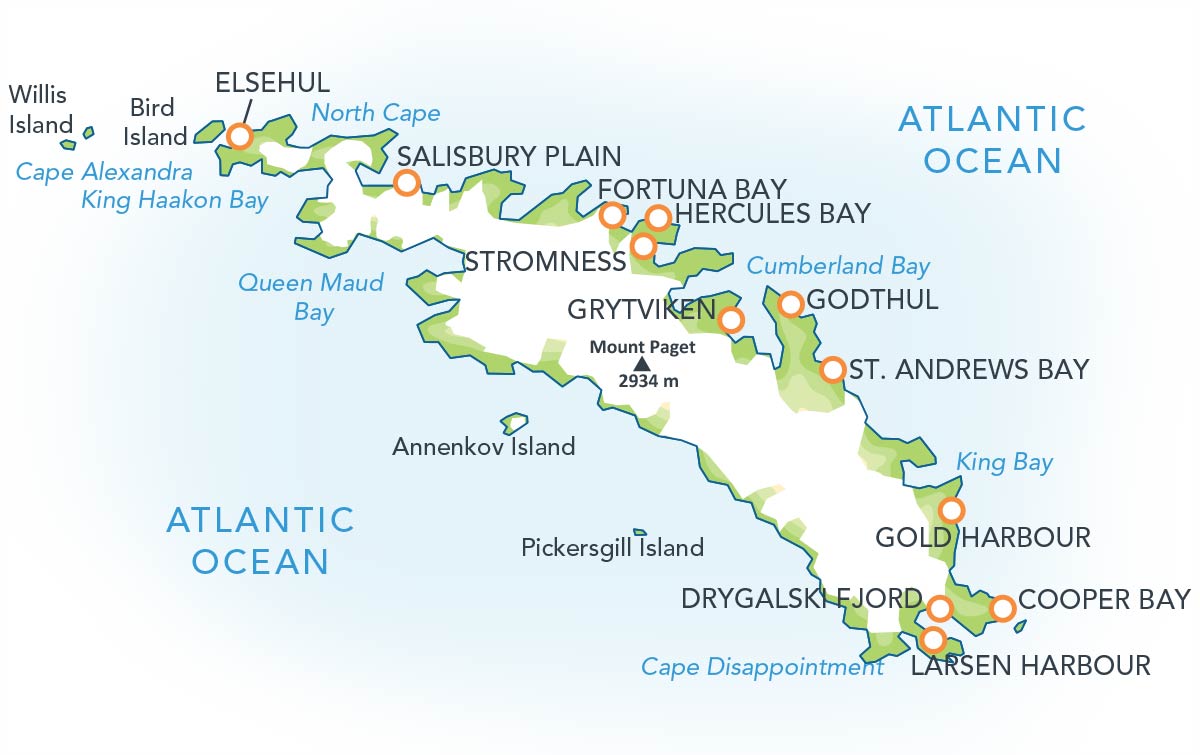
An Active Geography
South Georgia is a rugged, mountainous island. The majority of the island is comprised of deep marine rock, which was pushed up to the surface by a bend in the nearby tectonic plates, forcing rock above the sea surface. The British Overseas Territory of South Georgia also includes the South Sandwich Islands, an arc of active volcanoes to the southeast of the ‘mainland’. These volcanoes are among the most active on planet Earth, and play host to some of the planet’s largest penguin colonies, as well as permanently boiling lava lakes.
South Georgia is one of the few bodies of land in the path of the mighty Antarctic Circumpolar Current. As this powerful current hits the island, nutrient-rich waters are forced to the surface: the basis for the island’s exceptionally rich ecosystem, as well as its brutal weather conditions. The challenging climate of the island makes it a real achievement to reach the shore!
Wildlife of South Georgia
While South Georgia is not part of the Antarctic continent, it is within the ‘Antarctic ecoregion’, lying south of the Antarctic Convergence, the band of frigid water surrounding Antarctica. This puts it in the rare ‘sub-Antarctic’ category, warmer than the Antarctic, but far colder than South America, a place where northerly and southerly species mix, creating an island with a much greater diversity of wildlife than even Antarctica.
The rugged and challenging landscape of South Georgia is ideal for seabirds. Macaroni, Gentoo and Chinstrap penguins, as well as the majestic King penguin, all call South Georgia home, as do the ever-imposing elephant seals and 95% of the world’s population of Antarctic fur seals. And looking up, there’s always high aerial drama starring numerous albatrosses, petrels, pipits, shags, sheathbills and terns. A number of whale species also call the surrounding waters home, including Southern Right whales and Humpback whales; and if you’re really lucky, you may even spot the mysterious Arnoux’s Beaked Whale, rumoured to frequent South Georgia’s waters.
You might recognize this penguin from the famous Sony Pictures Animation movie 'Surfs Up'. Even though in real life they do not surf, with its vivid...
With over 22 different species worldwide, and considered one of the largest living flying seabirds by its wingspan (which can be larger the size of...
Antarctica’s penguins are one of the top reasons why people desire to travel to Antarctica. On the White Continent, you will certainly see hundreds...
A trip to Antarctica is a dream for animal lovers, with its amazing array of unique creatures. Even if you're not an avid animal enthusiast, the...
When we arrive in South Georgia, the mighty King Penguin is a sight to behold. When you see your first one, two, or three - that’s exciting. When...
Written by Paul Clammer Celebrating Antarctica 13 DAYS (10 nights on board) / Departures in Nov, Dec, Jan, and Feb A true celebration of everything...
As our summer ends and fall begins, it always brings our thoughts to what is happening in the Southern Hemisphere. Down in Antarctica, the austral...
What does the word 'albatross' mean to you? If you golf, you may be familiar with the term as it means you are three under par on a hole. The word...
On Saturday, March 5th, 2022, exactly one hundred years to the day after Sir Ernest Shackleton was buried on the island of South Georgia, scientists...
There is no mightier bird than the Wandering Albatross, a bird surrounded by lore and impressive in their size and wingspan. Also known as the snowy...
An encounter with a Humpback Whale is always a top experience for our guests, with these impressively huge animals curiously approaching our ships...
Grytviken is a legendary location on the South Georgia Islands that was home to the largest whaling station in the early 20th century. It is located...
Climate of South Georgia
South Georgia has a cold, maritime climate, largely influenced by the surrounding Southern Ocean. Powerful winds, heavy swells and rapidly changing conditions are all common features of the island’s weather. While not a part of the continent of Antarctica, South Georgia lies within the Antarctic Convergence – the zone of cold water around the continent – and is therefore considered part of the Antarctic ecoregion. This keeps temperatures on the island cold throughout the year, and means around 75% of the island is glaciated.
| AVERAGE HIGH | AVERAGE LOW | PRECIPITATION | |
|---|---|---|---|
| January | 46°F (8°C) | 37°F (3°C) | 4.72 in (120 mm) |
| February | 45°F (7°C) | 36°F (2°C) | 3.94 in (100 mm) |
| March | 41°F (5°C) | 32°F (0°C) | 5.12 in (130 mm) |
| April | 37°F (3°C) | 28°F (-2°C) | 5.91 in (150 mm) |
| May | 36°F (2°C) | 25°F (-4°C) | 5.51 in (140 mm) |
| June | 32°F (0°C) | 23°F (-5°C) | 6.30 in (160 mm) |
| July | 32°F (0°C) | 21°F (-6°C) | 6.69 in (170 mm) |
| August | 34°F (1°C) | 23°F (-5°C) | 5.91 in (150 mm) |
| September | 37°F (3°C) | 27°F (-3°C) | 5.12 in (130 mm) |
| October | 41°F (5°C) | 30°F (-1°C) | 5.51 in (140 mm) |
| November | 43°F (6°C) | 34°F (1°C) | 5.12 in (130 mm) |
| December | 45°F (7°C) | 36°F (2°C) | 4.72 in (120 mm) |
Popular Expeditions That Include South Georgia
South Georgia is most often visited on longer Antarctic voyages including visits to the Falkland Islands and Antarctic Peninsula. Select your adventure to gain the most complete Antarctic experience on the market.

